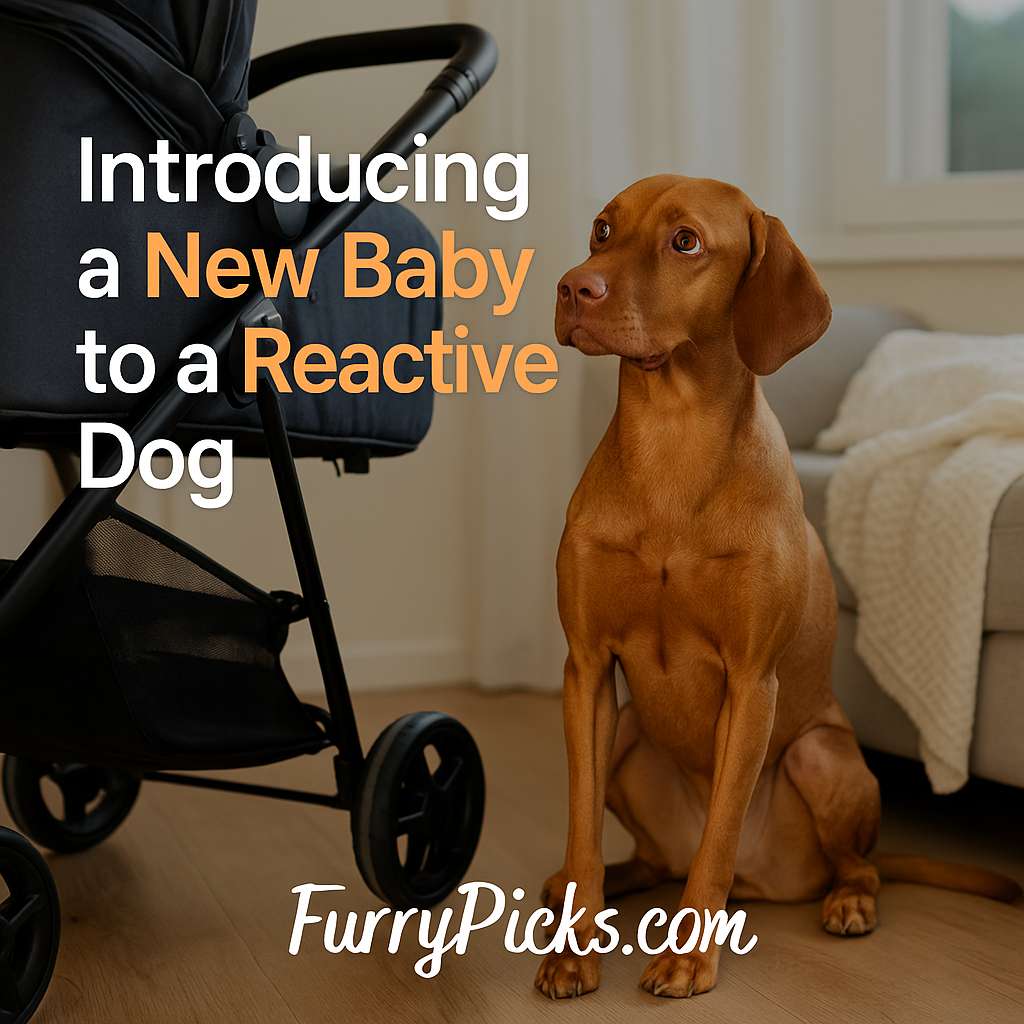Because your dog deserves a calm transition—and your baby deserves a safe welcome

Introduction:
Bringing a new baby into your home is a joyful milestone—but for a reactive dog, it can be overwhelming.
If your pup struggles with barking at visitors, pacing around changes, or reacting to unfamiliar sounds, introducing your baby to your dog can feel stressful.
The good news? With the right approach, you can help create a calm environment where your dog and baby thrive—together.
Don’t worry: with planning, structure, and empathy, even high-strung dogs can adjust beautifully to life with a baby.
🐾 What Does “Reactive” Really Mean?
A reactive dog isn’t aggressive or “bad.” Reactivity is a heightened emotional response—often rooted in fear, overexcitement, or anxiety. Your dog may bark, whine, jump, pace, or cling when overwhelmed.
Common triggers include:
- New people or sudden movements
- Unfamiliar sounds (like crying)
- Changes to their routine or your body language
Your job isn’t to suppress these feelings—it’s to help your dog feel safer.
🍼 Step 1: Start Creating Calm Associations Now
Begin this process before the baby arrives:
- Play baby sounds (crying, giggling) at low volume. Reward calm behavior.
- Use baby lotion or powder to get your dog used to the smells.
- Carry a baby doll around the house—rock it, sit with it, talk to it—so your dog gets used to new routines and your shifted attention.
The more familiar it feels, the less overwhelming it will be.
🐶 Step 2: Reinforce Basic Commands with Positivity
Clear cues = clear expectations.
Now is the time to make sure your dog responds reliably to:
- “Go to your place” (bed, crate, mat)
- “Leave it” or “Wait”
- “Look at me” to redirect attention when overstimulated
Use positive reinforcement—rewards, not punishment—to strengthen these behaviors in all settings.
👶 Step 3: Plan the First Meeting Carefully
Once the baby arrives:
- Keep early interactions short and low-pressure
- Let your dog observe from a distance—reward calmness
- Gradually decrease the distance only if your dog remains relaxed
- Never force contact or sniffing—go at your dog’s pace
Important: Never leave the dog and baby alone together—even for a second.
🏡 Step 4: Set Up a Safe, Predictable Environment
- Use baby gates or pens to define spaces
- Create a no-interruption zone just for your dog
- Keep routines stable: same walk times, meals, and play
- Provide your dog with mental enrichment to offset the chaos
Stability gives reactive dogs a sense of control—and confidence.
🌿 Step 5: Use Tools That Support Calm Behavior
Some dogs need a little extra help adjusting. Consider:
- Pheromone diffusers (like Adaptil)
- Calming treats or chews with L-theanine or chamomile
- Weighted vests or anxiety wraps
- In more serious cases, talk to your vet about medications (short or long term)
These supports make training more effective and reduce unnecessary stress—for everyone.
❤️ Final Thoughts: Structure, Love, and Patience
This new chapter is exciting—but it’s okay to feel overwhelmed. Your dog is part of your family too, and preparing them is an act of love.
With structure, empathy, and the right tools, even reactive dogs can adjust beautifully to a new baby in the home.
🛒 Looking for calming solutions? Explore our Dog Anxiety & Stress Collection for natural products that ease transitions and reduce reactivity.
Related Article:
Dog Anxiety: What Science Says—And What Your Heart Already Knows